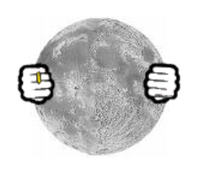UnNews:NASA announce new low-budget plan to contact aliens
9 October 2007
CAPE CANAVERAL, FLORIDA — Over the last few decades, the National Aeronautics and Space Administration have suffered a long series of financial cuts as government money is diverted to other causes such as the illegal detention of foreign nationals. One area in which the cuts have been felt most is in the field of astrobiology - the search for extraterrestrial life.
Dr. Marvin Jinkospiel is one of NASA's top astrobiologists. He claims, "Congress has been cutting back our budgets ever since the Nixon years. Unfortunately, they seem to think the search for aliens is somehow 'way-out' and kooky and would prefer to spend the tax-payer's buck on other things. However, we know that the American people would rather see their taxes funding research such as ours, because everyone knows that when we make contact the aliens will recognise our great country for what it is - the Greatest Nation on Earth - and will share all their secrets with us. This will mean we'll have anti-gravity drives, anti-matter torpedoes, plasma cannons and all sorts of cool stuff which will mean we will never again be threatened by the Russkies, the A-rabs or those goddamn slants. And best of all, every American child will be able to have their own pet E.T.!"
Although NASA does still receive several billion dollars a year, most of this is spent on their other activities, such as keeping 40-year-old technology like the Shuttle in something resembling space-worthy condition, or at the very lest in a state that ensures no more than every other mission fails. Another large chunk is used up by the Hubble space telecope program - as Hubble was designed, built and put into orbit before the advent of modern digital cameras, astronauts must fly eight missions a year to remove the 35mm film for developing back on Earth and to fit a new reel. The Administration has introduced a number of cost-cutting measures - for example, the Shuttle now runs on biodiesel made from waste cooking oil and the Hubble team get their photographs developed at a place that gives them a free film if they pay 50c extra for larger prints - but there is still just not enough left over to supply the astrobiology laboratories with the cash they need.
Two years ago, the astrobiologists called a meeting and brainstormed to see if anyone could think of cheaper ways to continue their search. "Well, we have some really great guys working with us," says Dr. Jinkospiel, "but over the years we'd kind of got set in our ways. We were used to designing a new array of radio telescopes, applying for funds and getting ten billion dollars that same afternoon. We soon realised that we were going to have to get some new guys in, some fresh-thinkers."
That injection of new ideas arrived in the form of Gary Sputnik, a young scientist who had just earned his PhD from Harvard with a stunning thesis on the subject of exobiology. Sputnik tells us that he "soon realised that the good old days, the glory days, of getting all the money the lab needed were never coming back. We could no longer beam messages into the universe in the hope that, somewhere, someone would pick them up and come calling. What we were going to have to do was create some kind of massive, highly visible sign - like a giant bill board if you will - that any passing aliens in the vicinity of Earth would see. Something that shouted out 'We are here!' and would welcome them in."
Easier said than done. After all, wherever an alien flying past Earth might originally have come from, he, she or it would be very unlikely to speak English. The sign could not simply be a great big poster saying 'Welcome to Earth - Open 24 hours.' Sputnik then had a brainwave. "I got to thinking," he says, "and I remembered that NASA's Pioneer space probes from back in the 1970s were fitted with plates made of gold, inscribed with symbols and geometric shapes that any intelligent life-form could instantly see were the work of another intelligent species. So I looked up some of those guys and found one of them, a guy named Joe McWhirter was still working out at the Jet Propulsion Lab in Pasadena. We invited him to join our program."
McWhirter quickly put together a team of experts to work on the project. The team realised that they needed a simple and welcoming image, something that could only possibly suggest a friendly greeting from an accommodating species. There was also the problem of where this orbital bill board should be placed. Jinkospiel tells us, "Well, the budget cuts that made this whole project necessary in the first place ensured that we could not create some sort of orbital platform, like a space station, on which to place the symbol. We were working with around $10 million, a space station would cost two hundred times that. Eventually, we hit upon the ideal solution - we already have a giant platform rotating around the Earth that is highly visible, and it costs no money per annum to maintain. The Moon was the obvious answer."
NASA is now working on a small unmanned spacecraft that will carry two tanks of the same kind of chemicals that are mixed together to form the foam used to insulate cavity walls. On board will also be a number of robotic bulldozers to the dark side of the Moon. Once the craft arrives, the chemicals will be combined to produce the foam; and the bulldozers, radio-controlled from Earth, will heap it up and sculpt it, forming it into the symbol designed by McWhirter that will - hopefully - bring Mankind to the attention of the extraterrestrials.


